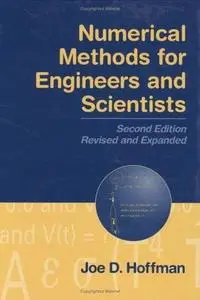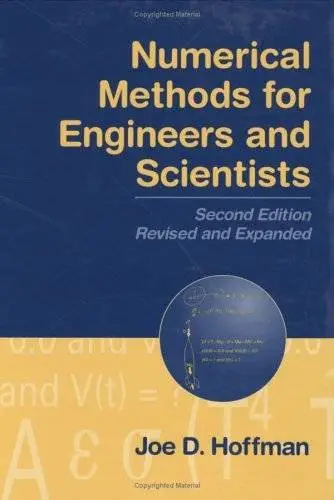Joe D. Hoffman, «Numerical Methods for Engineers and Scientists, 2nd Edition»
Marcel Dekker | ISBN 0824704436 | 2001 Year | PDF | 24,50 Mb | 840 Pages
Marcel Dekker | ISBN 0824704436 | 2001 Year | PDF | 24,50 Mb | 840 Pages
Presents a methodology for systematically constructing individual computer programs, emphasizing the finite difference approach for solving differential equations, and with new consideration for the finite element method. Each chapter includes FORTRAN programs for implementing algorithms, with more than 2600 mathematical expressions.
Amazon.com Review:
"A great textbook for a first course in Numerical Methods as it gives an extensive yet detailed coverage of numerical techniques that form the base for more advanced work in CFD. This book is based almost entirely on the finite difference method for solving differential equations. A chapter addresses finite element techniques but it only a primer; you will need a textbook solely devoted to FEM. This book is written for a mechanical engineer, as most of the governing equations are invariably from the areas of heat transfer, fluid flow, gas dynamics and solid mechanics.
Pros:
- Each method described comes with a index notated formula that takes the head ache out of programming. Plus there are plenty of FORTRAN subroutines to look at.
- Not only does Hoffman give you the finite difference equation he also throws in a solved example with one or two iterations worked out in full detail; the benefit of this cannot be overstated.
- Plenty of practice problems with results at the back of the book.
- Enough math to give the reader an insight into how the method works. If you care for rigor this is not the book.
- Hoffman has condensed the portions dealing with PDE's from previous editions cutting out some theoretical development. Since most wouldn't have had a course in PDE's (like me) a few more pages might have better squared away a few difficult concepts (eg. characteristic lines of PDE's).
- Could use another round of proof-reading. This book is littered with typos; which one runs into even in key formulas. This is unacceptable in what is otherwise a pedagogically sound book.
- I would have liked to see some more elaboration on multidimensional problems in PDE's apart from the 1D unsteady examples which form the workhorse. Hoffman mentions that the explicit methods for 1D unsteady problems work for higher while the implicit schemes introduce numerical complexity which merit advanced methods. These specialized methods for higher dimensional parabolic and hyperbolic PDE's are not developed. As it stands the book is packed with enough material for 3 semesters study.
I used it for the num. methods course even though the prescribed text was Heath's Scientific Computing which was the worst textbook I ever read (thankfully never purchased it). If you are getting started in CFD then this book provides a solid first step."
Rapidshare Download
Password: 82470443
Password: 82470443
I hope you enjoy this book. Please reply with any request for books similar to this one. Also please recommend any additional books related to this topic.



